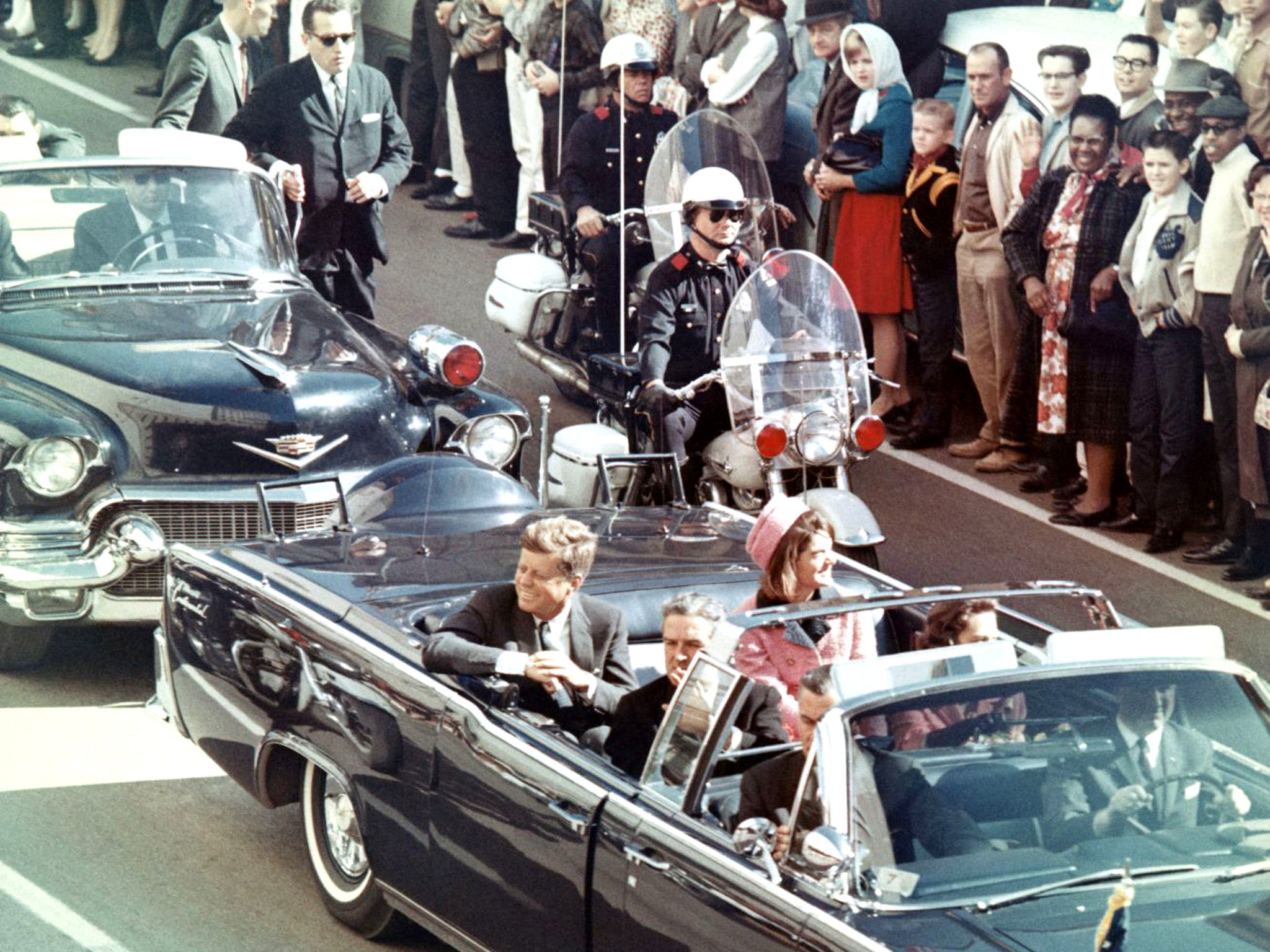The Final Ride For Camelot


A section on the final campaign ride of President Kennedy in the limousine in Dallas, Texas, on Main Street, minutes before the assassination. Also in the presidential limousine are Jackie Kennedy, Texas Governor John Connally, and his wife, Nellie. ( Image Walt Cisco, Dallas Morning News)
This haunting image captures the final moments of President John F. Kennedy’s motorcade as it winds through Dallas. By capturing this moment, it has forever been imprinted in history as a symbol of both hope and tragic loss. Taken on November 22nd, 1963, by Walt Cisco of the Dallas Morning News, the photo of then-President John F. Kennedy was being taken to document the historic visit to Dallas as a part of the more significant political effort to strengthen President Kennedy’s chances in the state ahead of the upcoming 1964 election. The motorcade intended to display Kennedy’s support and popularity within the state and nationwide during his presidency. In the hours leading up to Kennedy’s assassination, photographs like Walt Cisco’s capture a moment of routine, almost mundane public engagement. As the motorcade goes through Dallas, Kennedy and his entourage wave to crowds, seemingly unaware of the danger that is about to strike. Authors in books like The Assassination of John F. Kennedy often note how these images reflect an ordinary, almost celebratory atmosphere—at least until the moment of tragedy intervenes. This stark contrast between the calm, happy scene and the violence to come makes these images even more poignant. “Kennedy’s murder and its aftermath became a shared experience of virtually all Americans; he holds a prominent place in the nation’s collective memory of the twentieth century.” (George 14). The news of President Kennedy’s assassination was met with an almost universal sense of disbelief. People could hardly process the idea of such an abrupt and violent end to a leader who had been a symbol of hope and vitality for so many. It is also fascinating to look at the global ripples that this event would send around the world in the immediate reactions to the assassination of President John F. Kennedy. Robert Cook writes that Kennedy’s assassination created a collective grief unlike any the nation had experienced in recent memory. This grief was not only the result of his death but also the loss of a vision—a future that seemed suddenly uncertain. The televised images of mourning, from his widow to his young son, captured the national sorrow in ways that words alone could not. The reality is that the immediate aftermath of the assassination was a blur of confusion, mourning, and the search for answers. Americans turned to the media for clarity, and the role of media in shaping the national response cannot be overstated. Without clear explanations, emotions were left to guide the national response. This moment marked a profound shift in how Americans would relate to political violence in the years to come.
The period from which this piece emerges is one of political optimism and growing global tensions with the Soviet Union. JFK’s election, to many, brought a sense of youthful energy and progressive ideals to the American political landscape. JFK symbolized a new era of leadership, often referred to by many as the “New Frontier,” which aimed to address many of the present issues facing the country domestically and abroad. JFK’s death came at a time of profound cultural shifts, including significant successes of the civil rights movement, such as the 1963 March on Washington and Martin Luther King Jr.’s “I Have a Dream” speech. These cultural shifts were a testament to the dynamic nature of the era. It was also the era of the Space Race, and Kennedy’s leadership in pushing for America to land a man on the moon was a source of national pride. However, the image also reminds us of the divisions in American society as President JFK was trying to show his ability to appeal to many sides of the cultural landscape of the country, being a northern Progressive and the deep south of Texas trying to build a collation for his reelection bid.
In conclusion, Walt Cisco’s photograph of President Kennedy in the moments before his assassination captures both the optimism of a nation at the height of political hope and the devastating shock that would soon alter its course. The image reflects Kennedy’s efforts to strengthen his political standing before the 1964 election, symbolizing progress and unity. However, the violence of his assassination shattered this vision, creating a profound emotional rupture felt across the world. The photograph’s juxtaposition of calm and tragedy underscores the poignancy of the moment, reminding us how quickly history can change and how the loss of a single leader can reshape a nation’s trajectory.
Works Cited:
Banta, Thomas J. 1964. “The Kennedy Assassination: Early Thoughts and Emotions.” The Public Opinion Quarterly 28 (2): 216–24. https://research.ebsco.com/linkprocessor/plink?id=bf966798-9007-3ae5-b7da-98ceb3ee2726.
Cisco, W. (2017). President Kennedy and motorcade minutes before his assassination in Dallas in 1963. Wikimedia Commons. photograph. Retrieved October 7, 2024, from https://commons.wikimedia.org/wiki/File:JFK_limousine.png.
Cook, Robert, and Clive Webb. “Unraveling the Special Relationship: British Responses to the Assassination of President John F. Kennedy.” Sixties: A Journal of History, Politics & Culture 8, no. 2 (December 1, 2015): 179–94. doi:10.1080/17541328.2015.1099839.
George, Alice. 2012. The Assassination of John F. Kennedy : Political Trauma and American Memory. Taylor and Francis. https://research.ebsco.com/linkprocessor/plink?id=1e706d50-782e-3821-9df6-c9ae1181990f.
0 Comments